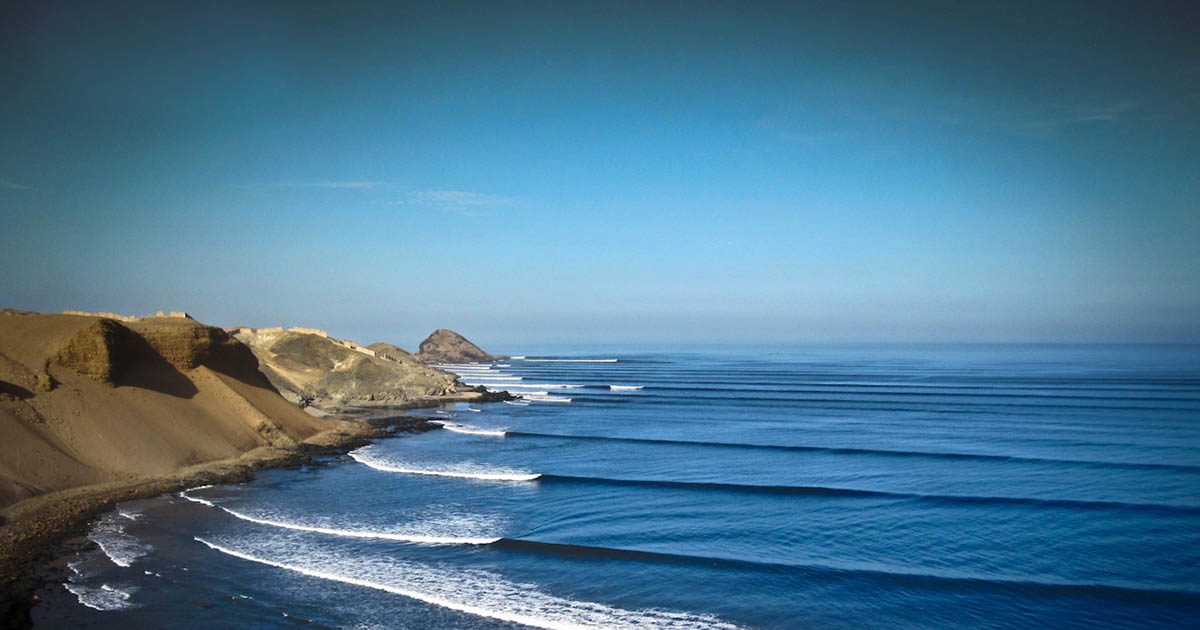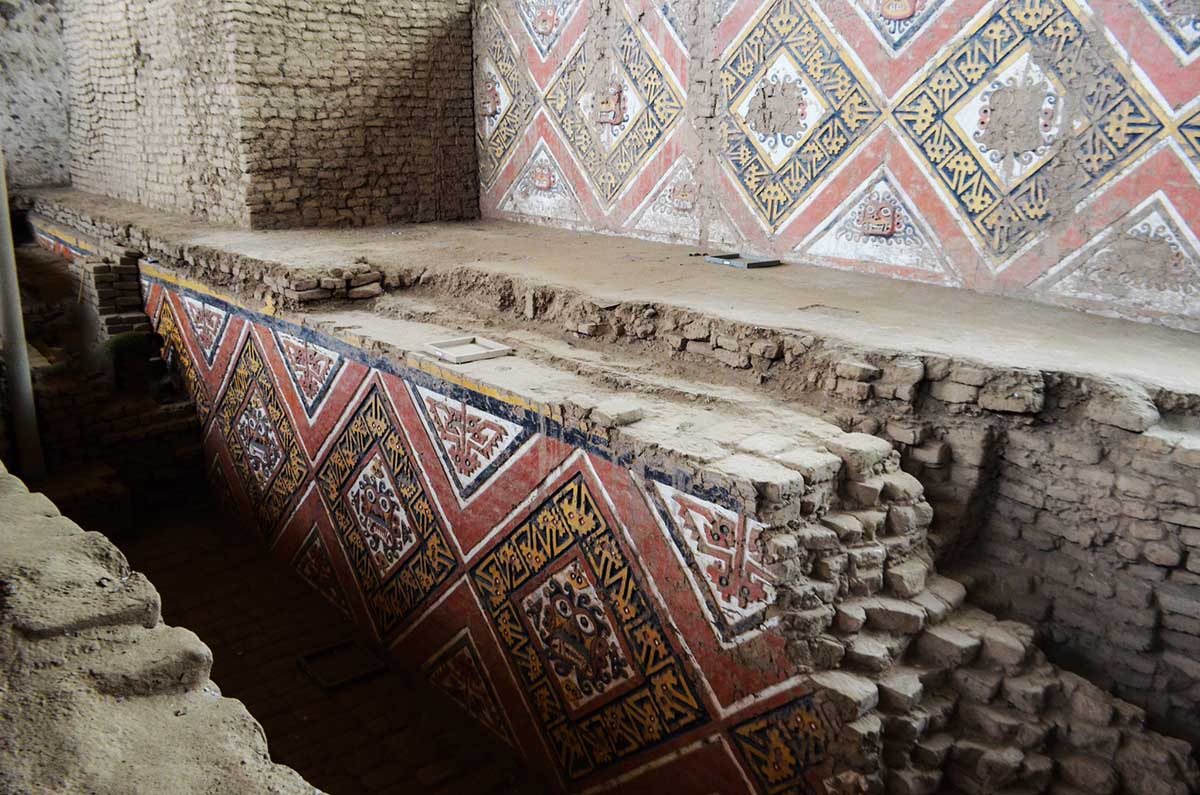
In northern Peru up the sandy desert coast sits the country’s most treasured wave, Chicama, the longest wave in the world. Chicama is also the first and only legally protected wave in the world. This wave and location have long been revered as one of the best surf destinations in the world because of its largely uncrowded waves, comfortable hotels, and delicious food. With this guide, you’ll have everything you need to know to plan and organize your trip.
If you’re planning on visiting Chicama and you also want to visit incredible ruins such as Machu Picchu or any other additional locations in Peru, feel free to contact contact us. We will happily help you plan your itinerary, making sure that the trip of your dreams happens. We can coordinate everything from flights, bus transfers, and hotels all with our expert guides.
Galapagos Tours:
Planning a trip to this famous wave is like a pilgrimage for most surfers. The road to Chicama is not the most simple, with no nearby airports, most surfers fly into Lima then drive or take buses to the northern city of Trujillo. After the 9 hour ride to Trujillo, another hour and a half bus ride will drop you off right at Puerto Malabrigo, also known as Puerto Chicama.
If you book with certain hotels at Chicama, shuttle services from Trujillo to your hotel are also available. For more options and exact information regarding which hotels offer shuttles, please contact our Travel Advisors.
The waves at Chicama break evenly with multiple take-off sections depending on the size, wind and swell direction that day. The sand-bottomed wave curls evenly with several quick sections. With the right swell, Chicama’s wave can even provide some barrels.
There’s a strong northern current that will shuttle you away from the peak, so the occasional paddle to stay in position is necessary. With a big enough swell, there’s the option to use Zodiac boats too that will ferry you to the peak after catching a long wave. In the Summer (from December to April) Chicama normally doesn’t receive too much big swell. A longboard or fish with some volume will do perfectly in the mellow waves. However, winter can bring in some pretty serious swell to Chicama. It’s best to bring a midlength or shortboard depending on conditions. Wetsuits are also essential since the winter months normally provide strong offshore winds that lower water temperatures.
In the earlier days of Peru’s surfing history, Chicama was discovered by chance when a surfer named Chuck Shipman spotted the wave in 1965 after flying to and from Peru for surf competitions. While looking out the window he saw a long breaking left-handed wave. He quickly located the bay on a map and saw Chicama as the nearest point, hence the name.
In 1966, a handful of expeditions lead by surfers who heard of Chuck’s sighting adventured unsuccessfully into the Peruvian desert unable to find the wave. A few years later, a surfer named Carlos (flaco) Barreda and a handful of other surfers discovered the wave at Puerto Malabrigo. However, by that point the name Chicama stuck.
The city in front of Chicama is actually called something completely different than the wave. Puerto Malabrigo is the official name of the town. However, some refer to it as Puerto Chicama now. It’s a small charming town with few restaurants and hotels. Within the town bordering the world-famous wave, the preferred method of transportation is by motorcycle taxi, walking or bus.
For small, perfectly pleasant longboardable waves, the summer months are best for Chicama. The largest swell tends to come in during May through August, but for some pleasant shoulder-to-head-high waves, the swell that begins towards the end of March is perfect.

Chicama wave from the cliffs of Puerto Malabrigo. Photo by Latin America for Less
There are a number of hotels with incredible views of Chicama’s wave. One of the most popular is the Chicama Boutique Hotel which offers an abundance of activities for surfers and non-surfers alike. Take a surfing lesson, cooking classes, or relax on the sandy beach between surf sessions. Regardless of Chicama’s wave, the location and beaches are completely worthwhile because of their beauty and clear waters.
Like most Peruvian towns, the food is delicious and quite representative of classic Peruvian food. Cevicherias around Puerto Malabrigo are abundant. Since the town is originally a fishing village, the majority of dishes are based on fish, mollusks, or other shellfish. Some of the most popular restaurants include Chicama Club, Chicama Resto Bar, Burgers and Brownies, Cevicheria Chicama, and El Point. Hotels around Chicama also offer delicious meals, for more recommendations, don’t hesitate to ask our Travel Advisors.
Peru Tours:
After catching a few leg-burning waves at Chicama, not too far from the world-famous wave are some incredible Pre-Incan ruins. Visiting these ancient sites will make your visit twice as worth it.

Intricately carved and painted murals at the Huaca de la Luna temple. Image: 10.6 Trujillo-1” by Esmee Winnubst, used under CC BY 2.0 / Adjusted brightness and compressed from original
Known as one of the largest and best-preserved ancient mud-brick cities in the world, Chan Chan is a must-see site within Trujillo.
On the banks of Chicama river this Huaca, or mud pyramid, contains some incredible painted relief murals. This is also the location where the Lady of Cao’s tomb was discovered, a famous mummy that is also known as the tattooed mummy.
Known as the Shrine to the Mooon in English, this Huaca includes more amazing painted murals. Multiple skeletons were discovered at the base of the Huaca as well, archaeologists assume that this was a site where a number of sacrifices occurred.
If you’re interested in planning your trip with us, we would be more than happy to design your perfect journey. We can coordinate everything from your hotel in Chicama to transportation, meals, and tickets to Machu Picchu if need be.



Email: [email protected]
Sign up to receive our newsletter for great articles, stunning photos, and special deals.